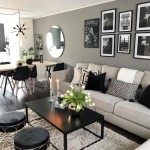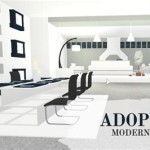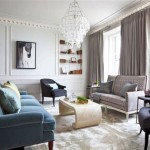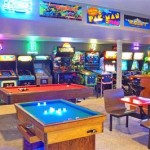Dark Blue and Orange Living Room Decor Ideas
The combination of dark blue and orange in living room decor presents a compelling visual contrast, blending sophistication with vibrancy. Dark blue, often associated with tranquility and stability, provides a grounding base, while orange injects energy and warmth. The successful integration of these colors requires careful consideration of balance, tone, and texture to achieve a harmonious and inviting living space.
Dark blue encompasses a broad spectrum of shades, ranging from deep navy and indigo to softer, muted teals. The specific shade choice significantly impacts the overall ambiance of the room. A deep navy, for instance, can create a formal and luxurious atmosphere, while a lighter teal offers a more relaxed and coastal-inspired feel. Similarly, orange presents a diverse palette, including fiery tangerines, muted rusts, and subtle peaches. Selecting the appropriate orange tone is crucial for complementing the chosen dark blue and achieving the desired aesthetic.
The distribution of dark blue and orange within the living room also plays a vital role in establishing visual balance. One approach involves using dark blue as the dominant color for walls, large furniture pieces, or flooring, then incorporating orange as an accent color through accessories like throw pillows, artwork, rugs, and decorative objects. Conversely, a lighter shade of blue could serve as a backdrop, allowing bolder orange elements to take center stage. Experimentation with different color ratios and placement is essential for achieving the desired aesthetic effect. Lightening a space with proper lighting is also an important aspect of interior design.
Establishing a Balanced Color Palette
The key to a successful dark blue and orange living room lies in establishing a balanced color palette. This involves not only selecting the right shades of blue and orange but also considering the proportion and placement of each color within the room. Overwhelming the space with either color can lead to an unbalanced and visually jarring effect. A common strategy is to adhere to the 60-30-10 rule, where 60% of the room is the dominant color (typically a neutral or dark blue), 30% is the secondary color (orange), and 10% is an accent color (which could be another shade of blue, orange, or a complementary color like cream or gold).
Consider, for example, a living room with dark navy blue walls. In this scenario, the 60% proportion is fulfilled by the walls. The 30% allocation could be implemented through an orange sofa, a pair of orange armchairs, or a large area rug featuring orange patterns. The remaining 10% could be introduced through gold-toned picture frames, cream-colored throw pillows, or a small vase filled with orange flowers. This structured approach ensures that both colors are represented in a visually appealing and harmonious manner, preventing one color from overpowering the other.
Furthermore, the specific shade of orange chosen should complement the chosen shade of blue. A deep navy blue pairs well with rich, burnt oranges and copper tones, creating a sophisticated and grounding effect. A lighter, more muted blue, such as a dusty teal, can be paired with brighter, more vibrant oranges, creating a more playful and energetic atmosphere. Experimenting with color swatches and visualizing the combinations in the context of the living room's lighting and architectural features is crucial for making informed decisions.
The integration of neutral tones is also essential for achieving a balanced palette. Neutral colors such as white, gray, beige, and cream can serve as a visual bridge between the dark blue and orange, softening the contrast and preventing the space from feeling too intense. Using neutral tones on walls, flooring, or large furniture pieces can provide a calming backdrop that allows the bolder colors to pop without overwhelming the senses. A mix of textures, such as a velvet sofa and a woven rug, can also contribute to the overall aesthetic.
Incorporating Texture and Materials
Beyond color, texture and material play a crucial role in enhancing the visual appeal of a dark blue and orange living room. The interplay of different textures can add depth, interest, and tactile richness to the space, creating a more inviting and comfortable environment. Incorporating a variety of materials, such as velvet, linen, wood, metal, and natural fibers, can further enhance the overall aesthetic.
Consider, for instance, a dark blue velvet sofa paired with orange linen throw pillows. The contrast between the smooth, plush velvet and the textured linen creates a visually interesting and tactile experience. Adding a woven jute rug underneath the sofa can further enhance the textural contrast, grounding the seating area and adding a touch of natural warmth. Similarly, incorporating wooden furniture pieces, such as a coffee table or side tables, can introduce a natural element that complements both the dark blue and orange tones.
Metal accents, such as brass or copper, can add a touch of sophistication and glamour to the living room. Brass picture frames, lamps, or decorative objects can complement the orange tones, while copper hardware on furniture can add a touch of warmth and richness. Incorporating metallic finishes sparingly can prevent the space from feeling overly ostentatious, while still adding a touch of elegance.
The choice of fabrics and materials should also consider the functionality of the living room. Durable fabrics like leather or microfiber may be more suitable for high-traffic areas, while softer fabrics like velvet or chenille may be more appropriate for accent pieces. Selecting materials that are easy to clean and maintain can ensure that the living room remains both beautiful and functional for years to come. Furthermore, ensuring all furniture, including pieces like sofas and coffee tables, fit seamlessly within the floor plan is important for comfort and style.
Leveraging Lighting to Enhance Color and Ambiance
Lighting plays a critical role in shaping the appearance of colors and creating the desired ambiance in a living room. In a dark blue and orange living room, strategic lighting can enhance the vibrancy of the colors, create depth and dimension, and transform the overall mood of the space. A well-lit room feels more spacious and inviting.
Layering different types of lighting is essential for achieving optimal illumination and creating a dynamic atmosphere. Ambient lighting, such as overhead fixtures or recessed lighting, provides overall illumination for the room. Task lighting, such as table lamps or floor lamps, provides focused light for specific activities, such as reading or working. Accent lighting, such as spotlights or picture lights, highlights specific architectural features or decorative objects, adding visual interest and depth.
The color temperature of the lightbulbs also significantly impacts the appearance of the colors in the living room. Warm white lightbulbs (2700-3000K) tend to enhance the warmth of the orange tones, creating a cozy and inviting atmosphere. Cool white lightbulbs (3500-4100K) provide a brighter, more neutral light that can enhance the clarity of the dark blue tones. Experimenting with different color temperatures can help to achieve the desired balance and mood.
Consider dimmer switches to adjust the intensity of the lighting throughout the day. Dimming the lights in the evening can create a more relaxed and intimate atmosphere, while increasing the brightness during the day can enhance visibility and productivity. Integrating natural light into the living room is also crucial. Maximizing natural light through large windows and skylights can enhance the vibrancy of the colors and create a more cheerful and uplifting environment. The layout of the furniture should complement the light source.
The placement of light fixtures should also be carefully considered to maximize their impact. Placing table lamps on side tables or consoles can provide localized illumination and add a decorative element. Floor lamps can provide ambient lighting and create a sense of height. Spotlights can highlight artwork or architectural features, drawing attention to specific elements of the room. Choosing the right type and placement of lighting can transform the ambiance of a dark blue and orange living room, creating a space that is both beautiful and functional. The interplay of light and shadows can add depth and dimension, enhancing the overall visual appeal of the room.

45 Blue And Orange Bedroom Ideas Easy Home Concepts

Spice Up Your Home Creative Burnt Orange Living Room Ideas

A Living Room With Stunning Blue And Orange Decor

40 Blue Living Room Ideas Transform Your Space With Calming Hues

15 Stunning Living Room Designs With Brown Blue And Orange Accents Home Design Lover

Orange And Black Interiors Living Rooms Bedrooms Kitchens

Design Inspiration Nature S Color Palettes Archi Living Com Web By Architects And Designers

Fall Into Orange Living Room Accents For All Styles

Blue And Orange Sofa Design Ideas

30 Small Living Room Decor Ideas Rugs Direct







